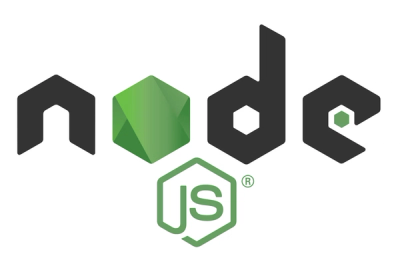
Security News
Django Joins curl in Pushing Back on AI Slop Security Reports
Django has updated its security policies to reject AI-generated vulnerability reports that include fabricated or unverifiable content.
next-tsr sets up an optional typesafe routing system for NextJS. It maintains a global list of both pages and API routes and provides components and functions to easily navigate to pages, or make API requests.
Initialize your NextJS application:
npx next-tsr init
This will generate an @/routes directory that you can use to navigate to pages and make API requests. It also generates a NEXT-TSR-README.md file in the root of your project that contains information about how to use the system.
You can update the files when the route paths change using the build command. This will update the @/routes directory to reflect the new paths. For example, if you add a new page, you can run the following command to update the routes:
npx next-tsr build
Instead of doing this:
import Link from "next/link";
<Link href={`/product/${product.id}`}>Product</Link>;
You can do this:
import { ProductDetail } from "@/routes";
<ProductDetail.Link productId={product.id}>Product</ProductDetail.Link>;
API routes are fully typesafe. Instead of doing this:
// Data is any
const data = await fetch(`/api/product/${productId}`).then((res) => res.json());
You can do this:
import { getProduct } from "@/routes";
// Data is strongly typed as the response of the getProduct function
const data = await getProduct({ productId });
And both the request and the response are strongly typed.
Because the system knows all of the API routes, their verbs, and their parameters, it can generate an OpenAPI schema for your API. This can be used to generate documentation, or to generate client libraries for your API.
This system is opt-in. You can use it for some routes, and not for others. You can use it for some parts of your application, and not for others. It's designed to be flexible and to work with your existing code, and to be incrementally adoptable.
Routes are typed using one or more of the methods defined in @/router/makeRoute.
makeRoute - Used for defining page routesmakeGetReoute - Used for defining GET API routesmakePostRoute - Used for defining POST API routesmakePutRoute - Used for defining PUT API routesmakeDeleteRoute - Used for defining DELETE API routesmakeRoute is used to define a page route. It takes the path of the route as a string, and an info object that contains the name of the route, as well as the Zod schemas for the route parameters and search parameters. Here is an example usage:
const ProductDetail = makeRoute("/product-detail/[productId]", {
name: "ProductDetail",
params: z.object({
productId: z.string(),
}),
search: z.object({
q: z.string().optional(),
}),
});
The returned ProductDetail is a function that when invoked with the params and search parameters, returns the URL of the route. Shown below is an example usage:
<Link href={ProductDetail({ productId: "abc123" }, { q: "foo" })}>
Product abc123
</Link>
In addition to the function, the ProductDetail object also contains a Link component that can be used to link to the route. Shown below is an example usage:
<ProductDetail.Link productId={"abc123"} search={{ q: "foo" }}>
Product abc123
</ProductDetail.Link>
There is also a ParamsLink component that can be used to link to the route using an explicit params object for the params. Shown below is an example usage:
<ProductDetail.ParamsLink
params={{ productId: "abc123" }}
search={{ q: "foo" }}
>
Product abc123
</ProductDetail.ParamsLink>
There are also three hooks returned.
useParams - A hook that returns the route parametersuseSearchParams - A hook that returns the route search parametersusePush - A hook that returns a function that can be used to push to the route. usePush takes three parameters; params, search, and options. Options are the same as for the next/navigation push function returned from useRouter.API routes are defined using makeGetRoute, makePostRoute, makePutRoute, and makeDeleteRoute. They take the path of the route as a string, and an info object that contains the name of the route, as well as the Zod schemas for the route parameters and search parameters. As well as a secondary object containing the body schema in the case of post and put. As well as the result schema in the case of post, put, and get. Here is an example usage:
export const getProduct = makeGetRoute(
"/api/product/[productId]",
{
name: "GetProduct",
params: z.object({
productId: z.string(),
}),
},
{
result: z.object({
id: z.string(),
name: z.string(),
price: z.number(),
}),
}
);
A function is returned that when invoked runs fetch against the endpoint and returns the result. There are three optional parameters; params for the route params, search for the route search params, and options for any additional options for fetch. Shown below is an example usage:
const data = await getProduct({ productId: "abc123" });
makePostRoute and makePutRoute require a body schema as well, and it accepts a body parameter as the first parameter to the function, as well as params, search and options.
makeDeleteRoute does not require a second argument, and it accepts params, search and options.
You can choose to simply use the makeRoute functions wherever you choose to define routes.
build optionThe automated option is to use the build command to generate the routes. This command will generate the routes for you based on the page.tsx and route.tsx files in your pages directory. For each page.tsx and route.tsx file it will generate a corresponding page.info.tsx or route.info.tsx file in the same directory.
It will then import those .info files into @/routes/index.ts so that you can import all the routes from @/routes and use them in your application. Inside @/routes/index.ts it will generate makeRoute invocations for each of the page routes, as well as makeGetRoute, makePutRoute, makePostRoute and makeDeleteRoute depending on the exported constants from the route.info.ts file.
The /routes/index.ts file imports the .info.ts files and exports routes.
graph TD;
paramRoute["/product/[productId]/page.info.ts"]
paramAPIRoute["/api/product/[productId]/route.info.ts"]
indexRoute["@/routes/index.ts"]
/page.info.ts-->indexRoute;
paramRoute-->indexRoute;
paramAPIRoute-->indexRoute;
indexRoute-->Home;
indexRoute-->Product;
indexRoute-->getProductAPI;
Components then import the @/routes module and use the routes to navigate to pages and make API requests.
graph TD;
paramRoute["/product/[productId]/page.tsx"]
indexRoute["@/routes/index.ts"]
indexRoute-->Home;
indexRoute-->Product;
indexRoute-->getProductAPI;
paramRoute-->Product;
paramRoute-.->indexRoute;
paramRoute-->getProductAPI;
For example in this case the ProductPage component imports the Product page route and uses that to type its parameters. It also imports the getProductAPI route and uses that to make an API request.
And the home page route:
graph TD;
paramRoute["/page.tsx"]
indexRoute["@/routes/index.ts"]
indexRoute-->Home;
indexRoute-->Product;
indexRoute-->getProductAPI;
paramRoute-->Product;
paramRoute-.->indexRoute;
Just imports the Product route from @/routes and uses that to build links to the product pages.
.info.ts filesThe .info files are meant to be manually edited.
For page.info.ts files you will need to manually edit them to add a search schema if the page supports search parameters.
For API routes you will need to manually edit the route.info.ts file to add the result schema for the API. For get routes you will need to add the result schema. For put and post routes you will need to add the body schema as well as the result schema. You do not need to add any additional information for delete.
.info files?The .info files are used to provide additional information about the routes. For all route types they provide the name of the route (which must be a valid Javascript variable name), the typed route parameters, and the optional route search parameters. For API routes, they also provide the HTTP verbs and their request and response types.
We put the .info files in the same directory as the page.tsx or route.tsx files so that we can keep all the information about a route in one place. It's the build command that creates .info files if they are missing, as well as maintains the index.ts file in @/routes that has all the routes.
Why not put all that information into the page.tsx or route.tsx files directly you ask? Two reasons:
page.tsx or route.tsx file that NextJS doesn't recognize. It will work in dev mode but will fail in build mode. The .info files are not used by NextJS, so they can contain any information we want.index.ts file in the @/routes directory imports all the .info.ts files from all the routes. If we imported all the page.tsx and route.tsx files directly then we would defeat any code splitting that NextJS does. By importing the .info files, we can ensure that the flow of imports is uni-directional. The index.ts file imports all the .info files, and all the page.tsx and route.tsx files import the index.ts file. This ensures that the index.ts file is the root of the import tree, and that the page.tsx and route.tsx files are only imported when they are needed.You can, and should, import your own Route from @/router if your route supports parameters or search params because you and use the .params and .search types to ensure that your route is correctly typed. For example, you might have a /product/[productId]/page.tsx file that looks like this:
import { ProductDetail } from "@/routes";
export default function ProductDetailPage({
params,
}: {
params: typeof ProductDetail.params;
}) {
return <div>Product Detail {productId}</div>;
}
This ensures that the route parameters are correctly typed in your page.tsx or route.tsx file.
@/routes/index.ts file?That would require running the build process continuously to keep the @/routes/index.ts file up to date. We want to avoid that because it would slow down the development process. We only want to run the build process when we know that the routes have been added, or moved.
In the current model you can add search parameters, or change the return type of a GET request, and the @/routes/index.ts file will not need to be updated. It will only need to be updated when the route paths change.
makeRoute copied into the @/routes directory?You own this routing system once you install it. And we anticipate as part of that ownership you'll want to customize the routing system. That's why we create a makeRoute.tsx file in the @routes module. This file is a copy of the makeRoute.tsx file from the next-tsr package. You can modify this file to change the behavior of the routing system.
For example, you might want to change the way GET, POST, PUT, and DELETE are handled. Or you might want to change the way the Link component works. You can do all of that by modifying the makeRoute.tsx file.
We do NOT recommend changing the parameters of makeRoute, makeGetRoute, makePostRoute, makePutRoute, or makeDeleteRoute functions because that would cause incompatiblity with the build command of next-tsr.
This system is based on the work in Fix Next.JS Routing To Have Full Type-Safety. However the original article had a significantly different interface and didn't cover API routes at all.
FAQs
NextJS Typesafe Router
The npm package next-tsr receives a total of 0 weekly downloads. As such, next-tsr popularity was classified as not popular.
We found that next-tsr demonstrated a not healthy version release cadence and project activity because the last version was released a year ago. It has 1 open source maintainer collaborating on the project.
Did you know?

Socket for GitHub automatically highlights issues in each pull request and monitors the health of all your open source dependencies. Discover the contents of your packages and block harmful activity before you install or update your dependencies.

Security News
Django has updated its security policies to reject AI-generated vulnerability reports that include fabricated or unverifiable content.

Security News
ECMAScript 2025 introduces Iterator Helpers, Set methods, JSON modules, and more in its latest spec update approved by Ecma in June 2025.

Security News
A new Node.js homepage button linking to paid support for EOL versions has sparked a heated discussion among contributors and the wider community.